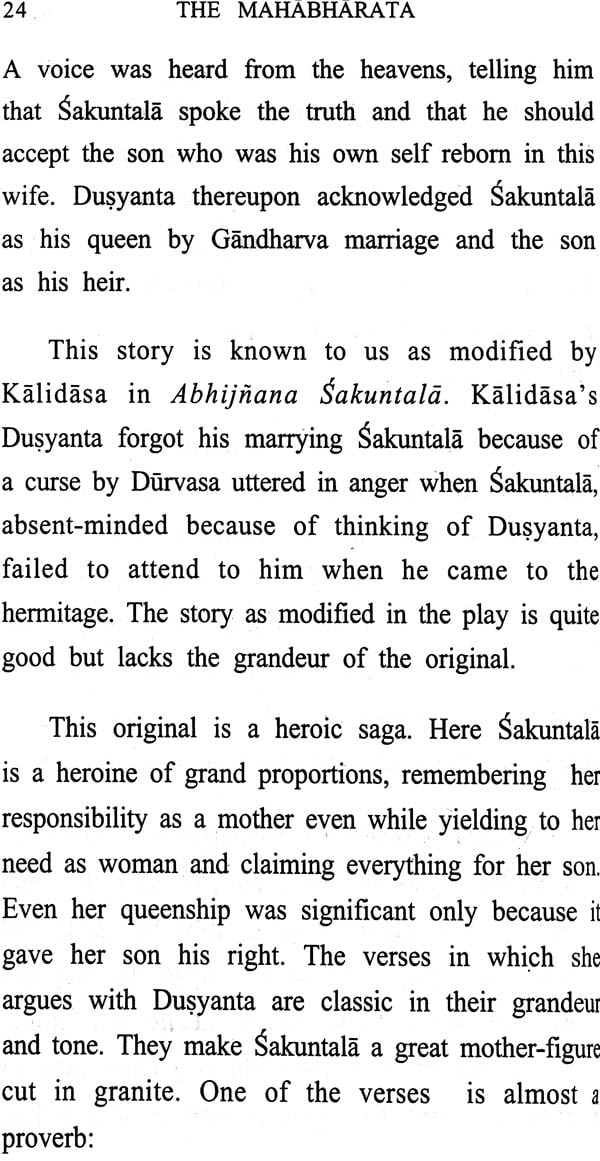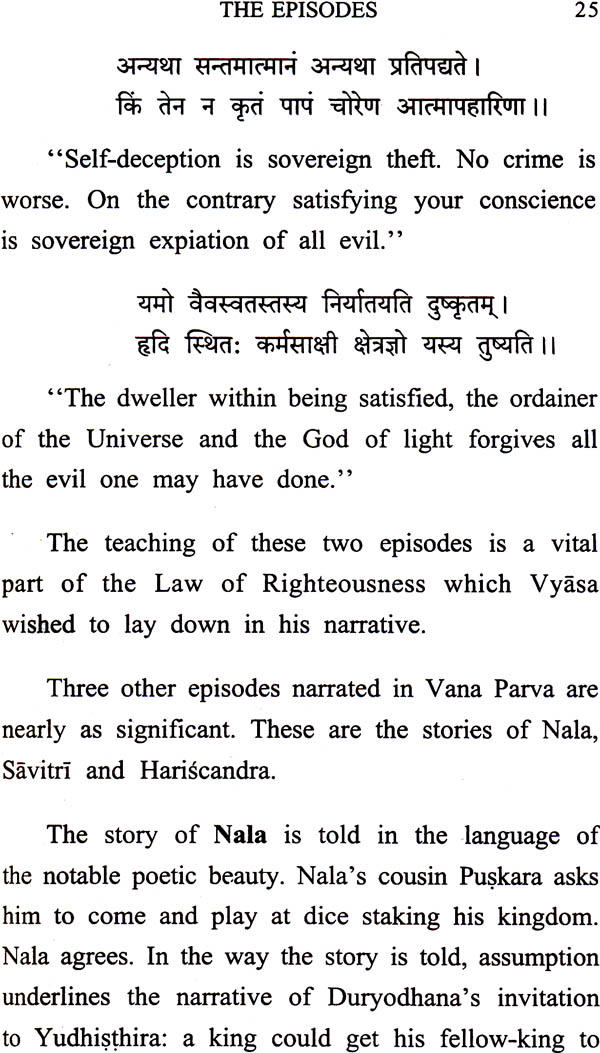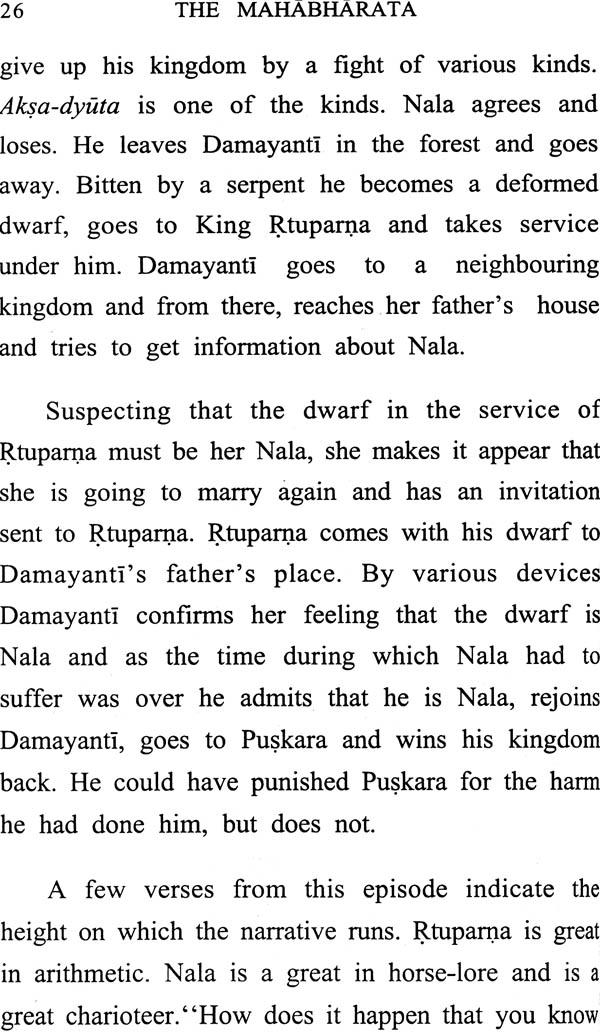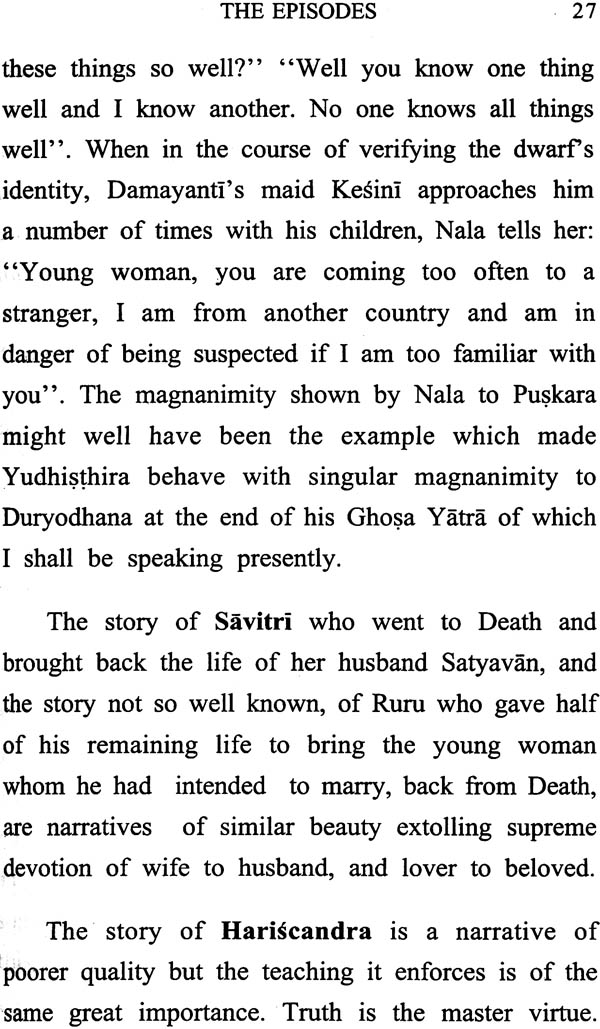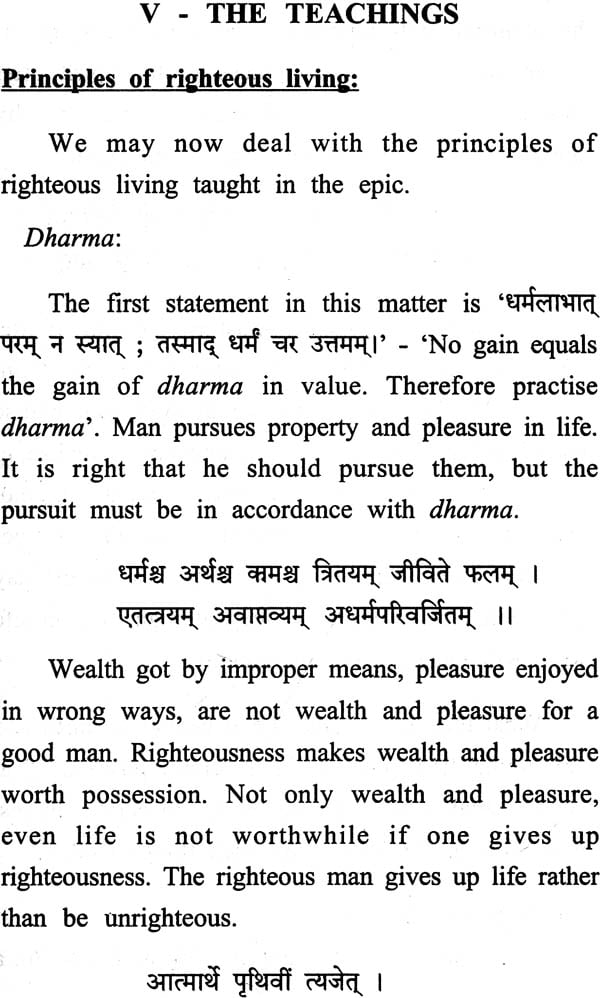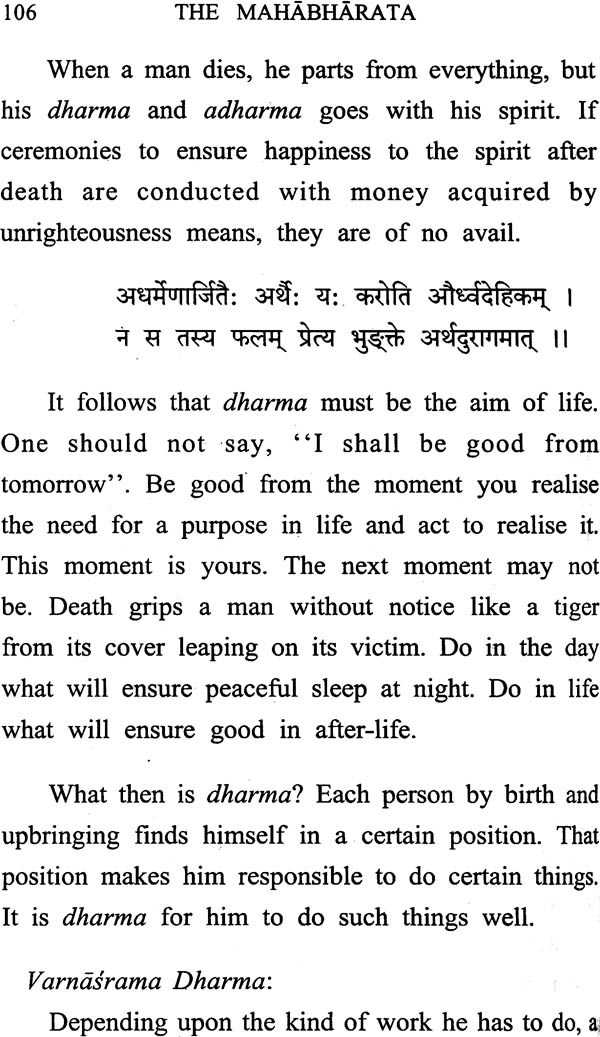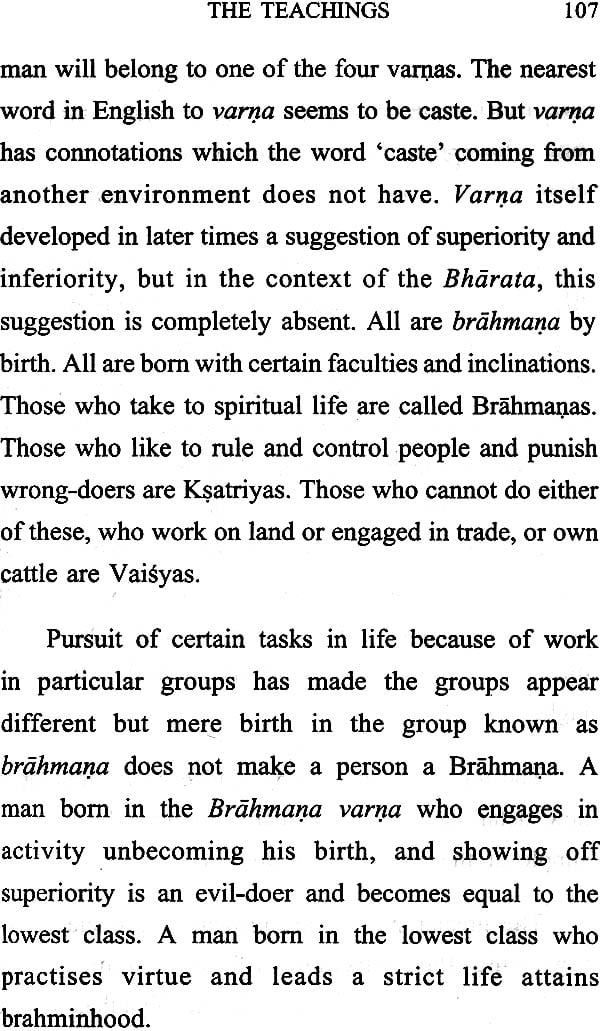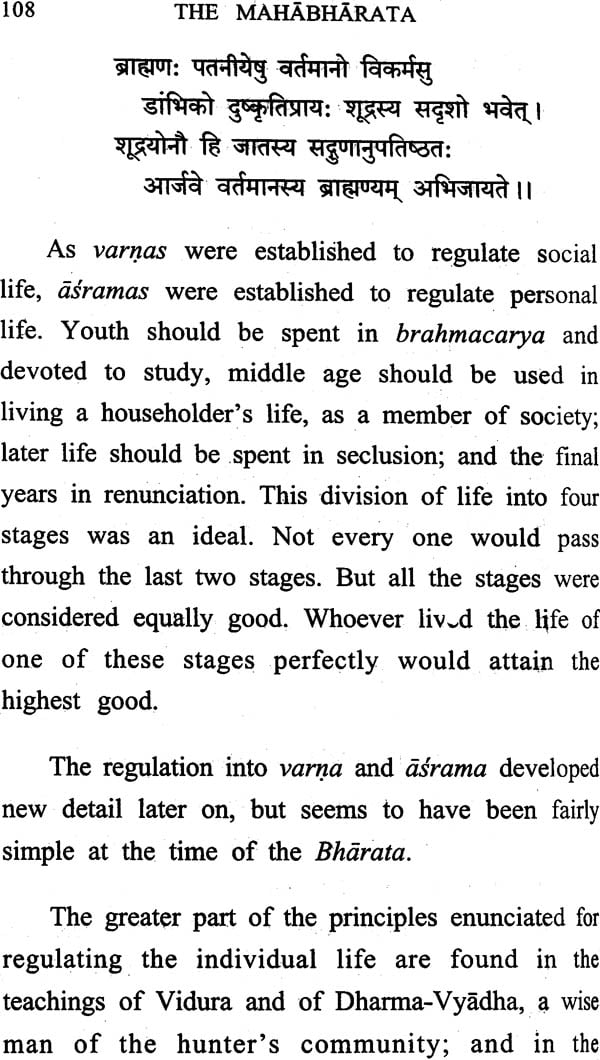
The Mahabharata
Book Specification
| Item Code: | NAL093 |
| Author: | Masti Venkatesa Iyengar |
| Publisher: | The Samskrita Academy, Chennai |
| Language: | English |
| Edition: | 2008 |
| Pages: | 161 |
| Cover: | Paperback |
| Other Details | 8 inch X 5 inch |
| Weight | 190 gm |
Book Description
Sri.K.Balasubrahmanya Aiyar was intimately connected with the Samskrita Academy, Madras, from its inception in 1927. He was an influential office-bearer of the Academy, effective in all its policy-making, and for several years before his sad demise, the President of this institution. It was most appropriate that his friends, colleagues and admirers in the Academy decided that his long association with this organisation should be commemorated by creating an Endowment fund and an annual series of Lectures in his name. Our appeal found favourable response and we thank all those who contributed readily to the fund. The Sri K. Balasubrahmanya Aiyar Endowment Lectures were inaugurated last year at the time of the first anniversary of his death.
No more suitable person would have been thought of by the Academy for inaugurating these Lectures than Sri Masti Venkatesa Iyengar. A distinguished Kannada writer, ‘Masti’ is also deep student of Sanskrit and a gifted exponent of its classics and of the thought and culture represented by them. In the Academy itself, he had lectured in the past on both the Epics. Besides, he had come into close contact with Sri.K.Balasubrahmanya Aiyar and had personally known him. We are thankful to ‘Masti’ for accepting our invitation and going to Madras and delivering these lectures in spite of his age and other inconveniences.
The Mahabharata is a subject which was near and dear to the late Balasubrahmanya Aiyar’s heart; hence its choice as the subject of the inaugural lectures. The Lecturer has provided here a handy viewer through which the vast and enthralling vistas of Vyasa’s Great Epic and its art and wisdom could be seen and meditated upon. The paramountcy of Dharma which Vyasa shouted from house-tops, as he himself says, is, as every one would agree the greatest need of the Country today. To bring it to the people again and again is a sovereign service. The Samskrita Academy is gratified that it has been playing a part in keeping the public exposed to the values of this and the other great classics in Sanskrit with co-operation of distinguished savants like the present Lecturer.
Respected President Dr.Rajamannar, Dr. Raghavan, Ladies and friends,
The first thing I must do to-day is to express my sense of the honour done to me by the organisers of this function in asking me to deliver the first course of lectures instituted to honour the memory of our late friend Sri K.Balasubrahmania Iyer.
Balasubrahmania Iyer was a great citizen of Madras. His death was a grievous loss to the life of the city in many directions. It was of course a cause for great grief to all who had known him personally. He was a year younger than I, and might in the normal course, have lived longer. I saw him for the first time when I came to Madras in 1934 to deliver the lecture on Valmiki on Valmiki Day in this very Academy. Sri K.Chandrasekharan, Balasubramania Iyer's younger brother, who happily is amidst us, was responsible for getting me to Madras then. He was Secretary of the Academy then and Mahamahopadhyaya Kuppuswami Sastriar, the President. I was a guest in the house of the brothers and became almost a member of the household. Our friendship grew as the years passed and I came to Madras many years later on Balasubramania lyer's invitation to speak on Vyasa Purnima day on the Mahabharata, again in this Academy. The brothers were my hosts then also.
Balasubramania lyer, I said, was quite young when the death of his father, the great V.Krishnaswami lyer, left him to complete the many tasks that had been undertaken in his great life the Sanskrit College, the Ayurvedic School and many other similar responsibilities. Another man as young, left with as much money, might not have carried out his responsibilities as Balasubramania lyer did. Still in his early twenties, Balasubramania lyer took careful note of all that his father had wished to do and methodically attended to everything and carried out all the wishes of the great man.
Balasubramania Iyer himself, I submit, was a great man. The generations do not apply this adjective to everyone who deserves it. The reasons for this are many and we need not go into them. But the man's altitude is not altered by this fact. Balasubramania Iyer was a well-equipped lawyer, a good business man, a distinguished banker, Chairman of Boards and Committees, managing a number of Institutions, Member of the Legislative Council, member of the University Bodies and a great leader of the community to which he belonged.
As the years passed, Balasubramania Iyer developed a personality both dignified and impressive.
It is only proper that we who knew him and loved him, should, in mourning him, wish to perpetuate his memory.
I have chosen as the subject for these lectures the Mahabharata. The Mahabharata and the Ramayana are great books which the Indian people can claim with pride as great inheritance. Balasubramania Iyer loved the Mahabharata. As I said earlier, he invited me to speak here about it years ago. Just last year, he himself delivered two lectures on the Yaksa-prasna episode of the Mahabharata in the Bangalore Centre of the Bharatiya Vidya Bhavan. The Mahabharata therefore appeared to me an especially appropriate subject for these commemoration lectures.
I propose in these lectures to deal with the Mahabharata under four heads: (1) The structure of the Mahabharata, (2) The episodes included in the Bharata, (3) The story, (4) The characters and (5) The teachings.
| Preface to Second Edition | iii | |
| Preface to First Edition | v | |
| Introduction | 1 | |
| I | The Structure | 5 |
| II | The Episodes | 20 |
| III | The Story | 29 |
| IV | The Characters | 44 |
| V | The Teachings | 105 |
| Conclusion | 148 |
